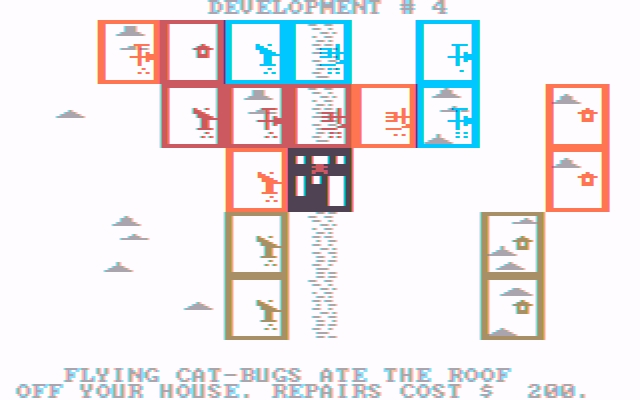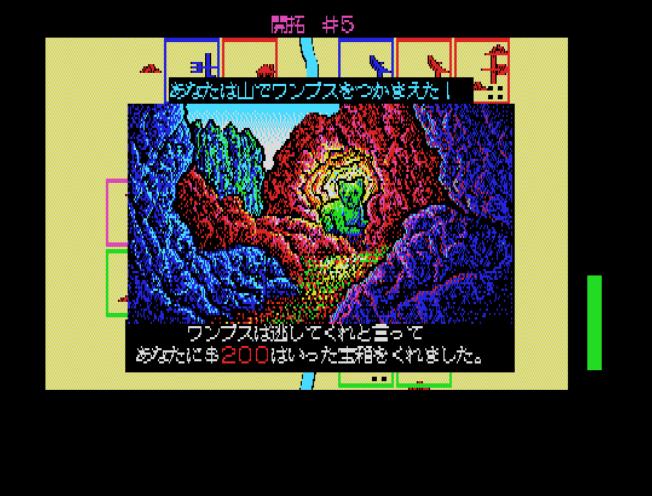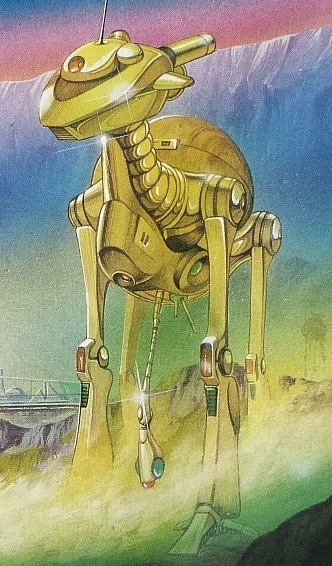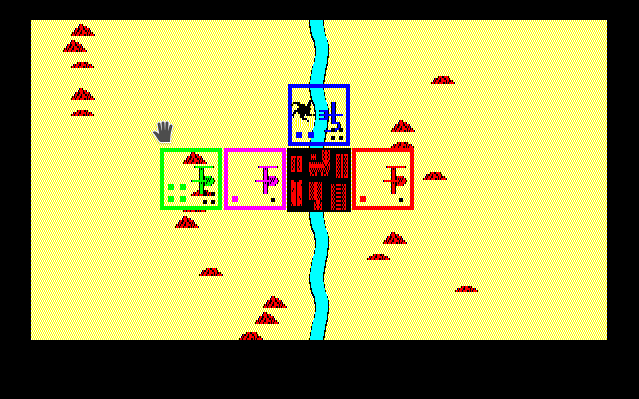
After the original releases for Atari and C64, Ozark Softscape turned its attention to new games. The further marketing of M.U.L.E. was left to EA, who, together with various partners, had the game converted for other popular home computer platforms. We will now briefly introduce you to these rather unknown conversions.
1985 – IBM PCjr
Two years later, the first PC version of M.U.L.E. was released to support the launch of IBM’s brief foray into the home computer market, the IBM PCjr. EA hired the small software company K-Byte to make it. This version of M.U.L.E. has also been available on the Good Old Games (GOG) platform since 2021 for $5. However, the release on GOG is not recommended, as it ignores the special capabilities of the IBM PCjr – a 16-colour composite video mode, as can be seen in the screenshot – and only displays four-colour CGA graphics. To enjoy this 16-colour version, a specially patched version of the DOSBox emulator is required. In terms of gameplay, the PCjr version is interesting mainly because it allows you to extend a tournament to 24 rounds instead of 12. However, this mode is not really recommended, as it just makes the game drag on pointlessly.

1987-88 – MSX, Sharp X1, PC-88
In 1987 and 1988, M.U.L.E. was ported by the Japanese publisher Bullet Proof Software (BPS) to three home computers, the MSX, Sharp X1 and PC-88, which were mainly used in Japan. There is little difference between the versions in terms of gameplay or graphics, although the MSX version is a little more colourful and the PC-88 version has a great FM soundtrack on the Yamaha YM2203. All three versions are quite well done and very close to the Atari original, so apart from the Japanese language, they have our clear recommendation. You should probably pick up the PC-88 version first, as it offers the best gaming experience thanks to the great FM soundtrack. These Japanese releases are also impressive: The reinterpretation of the M.U.L.E. design on the game cover, in the style of 1950s/60s science fiction artwork.
- read more about the MSX version in the respective deep dive




